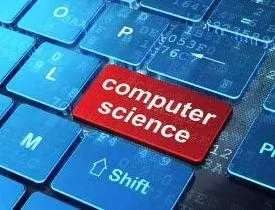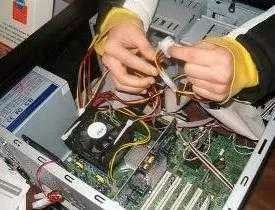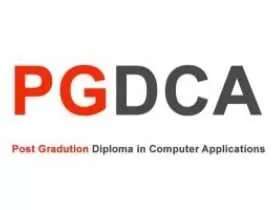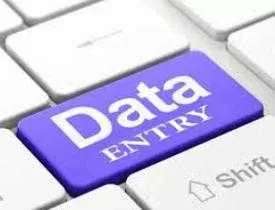Description
Course Name: Diploma in Computer Science (DCS)
Course Id: DCS/Q0001.
Education Qualification: 10th Pass.
Duration: 370 Hrs.
How You will Get Diploma Certificate:
Step 1- Select your Course for Certification.
Step 2- Click on Enroll Now.
Step 3- Proceed to Enroll Now.
Step 4- Fill Your Billing Details and Proceed to Pay.
Step 5- You Will be Redirected to Payment Gateway, Pay Course and Exam Fee by Following Options.
Card(Debit/Credit), Wallet, Paytm, Net banking, UPI and Google pay.
Step 6- After Payment You will receive Study Material on your email id.
Step 7- After Completion of Course Study give Online Examination.
Step 8- After Online Examination you will get Diploma Certificate soft copy(Scan Copy) and Hard Copy(Original With Seal and Sign).
Step 9- After Certification you will receive Prospect Job Opportunities as per your Interest Area.
Online Examination Detail:
- Duration- 120 minutes.
- No. of Questions- 60. (Multiple Choice Questions).
- 10 Questions from each module, each carry 10 marks.
- Maximum Marks- 600, Passing Marks- 40%.
- There is no negative marking in this module.
| How Students will be Graded: | ||
| S.No. | Marks | Grade |
| 1 | 91-100 | O (Outstanding) |
| 2 | 81-90 | A (Excellent) |
| 3 | 71-80 | A (Very Good) |
| 4 | 61-70 | B (Good) |
| 5 | 51-60 | C (Average) |
| 6 | 41-50 | P (Pass) |
| 7 | 0-40 | F (Fail) |
Benefits of Certification:
- Government Authorized Assessment Agency Certification.
- Certificate Valid for Lifetime.
- Lifetime Verification of Certificate.
- Free Job Assistance as per your Interest Area.
Detail Syllabus
Diploma in Computer Science
Introduction to Computer Concept
Introduction to computer and computing: evolution of computing devices, data and information, types of data, functional components of a computer system and their interconnections, I/O devices, data transfer through system bus, Computer Memory: Units of memory, types of memory – primary and secondary; data deletion, its recovery and related security concerns, Microprocessor: Evolution, features of microprocessor including memory size, word size , clock speed, introduction to microcontrollers, Software: purpose and types – system and application software, operating system, language translators, device drivers, programming tools, generic and specific purpose software, classification of programming languages (high level language, machine language), Operating System (OS): Need for operating system, brief introduction to functions of OS, user interface, Printers Types of printers, Scanner, Modem, Video, Sound cards, Speakers, Concepts of computer Network, Client Server Model, Peer to Peer Model, Networking Devices: Switch, Router, Hub, Bridge, Gateway.
Programming Using C
Concepts of C programming language, implement the language constructs concepts, Install C software on the system and debug the programme, d execute member functions of C in the programme, implement array concept in C programme, Steps in development of a program, algorithm development, concept of flowcharts, programming and use of programming, various techniques of programming, Structured Programming, Preprocessors, Debugging, Compiling, Structure of C program, Writing and executing the first C program, Translator: Assembler, Interpreter, Compiler, I/O statement, assign statement, Keywords, Introduction to functions, Global and Local Variables, Function Declaration, Function Call and Return, Types of Functions, Standard functions, Introduction to Arrays, Array Declaration, Length of array, Manipulating array elements, Single and Multidimensional Array.
Computer Network
To introduce the concepts, terminologies and technologies used in modern data communication and computer networks, concepts of data communications, functions of the data link layer and to introduce IEEE standards employed in computer networking, various components and categories of data communications, types of connections, topologies, protocols and standards, various transmission media and modems, various switching techniques used and implement the various routing and router protocols, Network Application: IP Camera Management: IP Camera Technical specifications-IP Camera form factor-IP Camera Image features-D Link IP Camera Advanced Configurations, Switch Management : Overview of D Link Switches and features – Accessing and configuration the switch – Switch learning process – VLAN and GVRP, Understanding Spanning Tree protocol – Switch life cycle – Basic-Understanding D Link Switching features like DHCP, ACL, LDP and System Maintenance, errors using various algorithmic techniques, be aware of the various Ethernet standards and bridges.
Software Engineering
Introduction- Notion of Software as a Product – characteristics of a good Software Product, Engineering aspects of Software production – necessity of automation, Job responsibilities of Programmers and Software Engineers as Software developers, Software engineering backdrop; Software development orientation, software development practices, processes, and architecture , software development and life cycle, software project management, estimation techniques, quality management systems, quality control: reviews, configuration management, software requirements phase, process modeling, data modeling, time frame modeling, software design phase, user interface design, computer aided software engineering, software construction phase, quality control: testing, Formal Methods in Software Engineering – Z notation, Hoare’s notation. Formalization of Functional Specifications – SPEC. Support environment for Development of Software Products, Representative Tools for Editors, Linkers, Interpreters, Code Generators, Debuggers.
Web Programming
Introduction to web architecture, standards, protocols, tools, and technologies HTML and CSS, JavaScript, Database Technologies and SQL XML Technologies, Introduction to Service Oriented Architecture (SOA) and Web Services Designing and Implementing Web Services with SOAP, Web Security Protocols & Standards, Server-side programming with PHP Semantic Web, major areas and challenges of web programming, Use PHP to access a MySQL database, Functions Advanced Web Programming: Regular expression, Secure communication and encryption/decryption, Session management and timeout, Asynchronous communications with JSON, XML, and AJAX, Pushing data to client, Development of API using classes and objects, Other miscellaneous topics, Positioning and centering, overlapping and displaying a popup box, and dimming an area and disabling events over an area, importance of the web as a medium of communication,
Mobile Computing
Introduction to wireless networking and characteristics of mobile computing, Fundamentals of wireless transmission – Medium Access Control Protocols FDMA, TDMA, CDMA, Overview of Wireless LAN, Overview of Bluetooth architecture, .Introduction to Mobile Adhoc Network and routing protocols- DSDV, WRP, CGSR, FSR, AODV, DSR, ABR, TORA, Mobile Networking protocol, Effects of mobility on Reliable Transport Protocols, Mechanisms for improving TCP performances on wireless link, Overview of Security in mobile environments, Understand various messaging environment in mobile environments, Mobile Computing Through Telephony: Evolution of Telephony – Multiple Access Procedures – Mobile Computing through Telephone – Developing an IVR Application – Voice XML – Telephony Application Programming Interface (TAPI), Wireless Devices with SYMBIAN OS: Introduction – Symbian OS Architecture – Applications for Symbian – Control and Compound Controls – Active Objects – Localization – Security on the Symbian OS.






